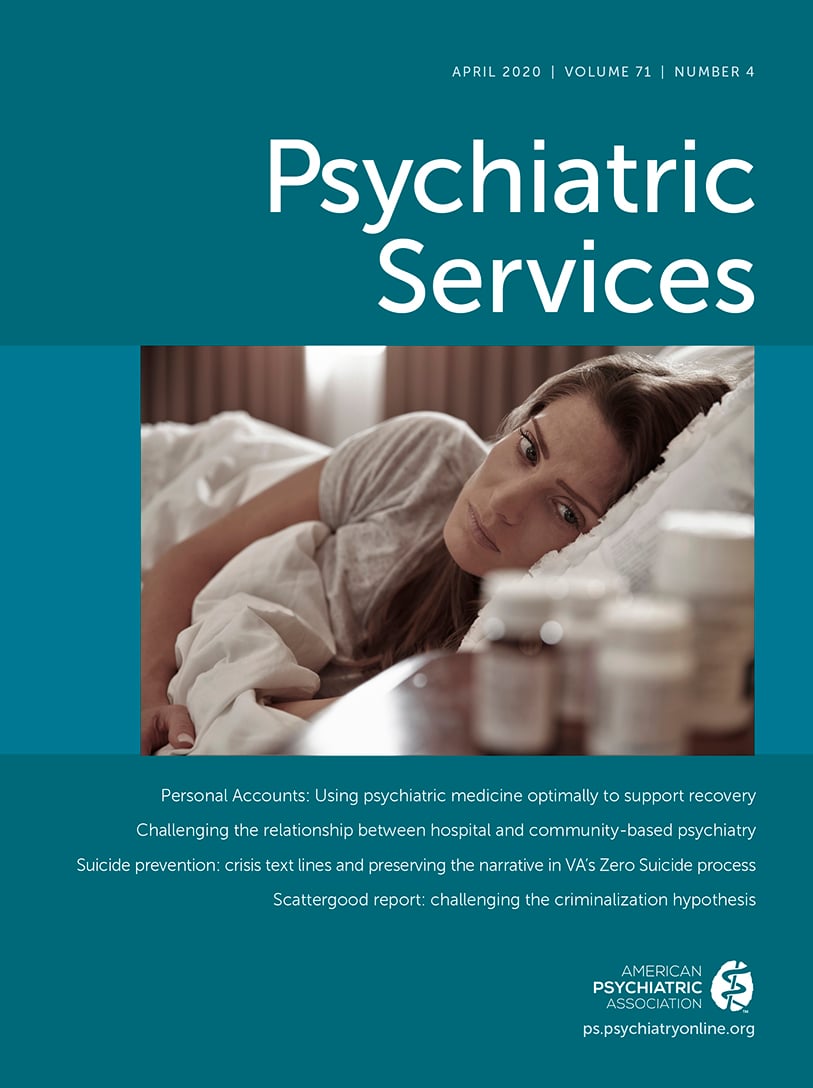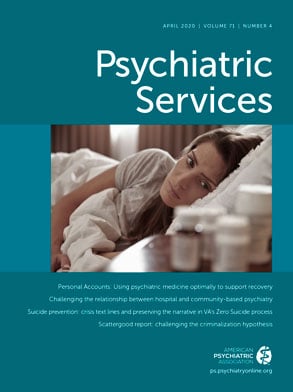Judges are in the position to see how society fails the most vulnerable among us. Many decide to do something about it (
1). Perceiving the mental health system as failing, judges have developed problem-solving courts and other programs to meet a problem of failed mental health policy. Although evidence-based programs and effective therapies exist, the current funding structure of the community mental health system limits its ability to provide optimal, therapeutic, and relationship-based care.
A conversation I had recently with a mental health court judge underscored how far the mental health system must go to achieve its potential. The judge described her new program for people with serious mental illness. Her commitment to the people served by the program was impressive. Her court meets every other week. The biweekly informal status hearings are held in open court and require all participants on a given day to stay for the entire session. The idea is that by seeing the success of others, people new to the program will gain a renewed sense of hope. In that setting, each individual also gets direct face time with the judge, who demonstrates her belief that the person can take responsibility for managing his or her recovery. The courtroom is also a place where participants see the tough love—the sanctions—given to participants who are not taking such responsibility. They may be required to come to court daily to see the consequences of unlawful behavior or supply daily drug screens. The judge wields a stick as well as a carrot. But by all accounts, the participants in this and other mental health courts really want to please the judge. This has been called the “black robe effect.”
But what really stood out to me is what happens during the alternate weeks when status hearings are not held. The judge opens her chambers to one-on-one meetings with the mental health court team. During this time, which the judge calls “recovery hour,” participants are invited to come and help the team understand them as individuals. Some talk, some rap, and some recite poetry. By all accounts the participants love this opportunity to make a personal connection.
In assessing the impact of the program, the judge shared the powerful message she has received from multiple participants. The most effective aspect of the mental health court, according to these individuals, most of whom are well known to the local mental health system, is that for the very first time an authority figure has shown real interest in getting to know them as people, has shown that she cares about them, and devotes time to develop a real relationship.
My reaction to this story was mixed. On the one hand, I was so impressed and appreciative of what the judge is doing. She is clearly helping people, many of whom have struggled for years. Her experience confirms what we have long known in psychiatry—the relationship is the driver of good outcomes.
On the other hand, I was distressed beyond words. How can it be that a patient in our mental health system could not recall having ever encountered an authority figure in the treatment setting who demonstrated a desire to know the individual as a person?
Individuals with serious mental illness should not have to go before a judge to experience the healing effect of a caring, therapeutic relationship maintained over time. Is that not what the mental health system was designed to provide? I fear that our current system treats patients as if they are objects on a factory conveyor belt. Not uncommonly, visits with doctors are short “med checks,” and interdisciplinary team meetings are increasingly rare. Rarer still are open office hours, when doctors and other team members invite their patients to share whatever they want the team to know about them as people.
In my mind, it is much more appropriate that the authority who demonstrates such concern would wear a white coat, representing a caring clinician, rather than the black robe of a judge. I wish all psychiatrists and other mental health professionals had as much time as the judge and her team to develop relationships. Psychologists and social workers providing psychotherapy are often missing from the team altogether. Elyn Saks, in describing her remarkable recovery from schizophrenia, viewed her psychotherapy as essential as her antipsychotic medication (
2). Rob Laitman, whose son has schizophrenia, is an internist who now both treats and advocates for patients with schizophrenia. Laitman describes his aspiration as a future in which all patients receive appropriate medication and are “actively supported by a team of dedicated professionals” comprising a physician, psychologists, social workers, and peers (
3). How often is this aspiration met?
To be clear. I don’t blame mental health clinicians for the failings in our system. They are doing the best they can, but as the saying goes, “Every system is perfectly designed to get the results it gets.” Although there is much talk of alternative payment methods and outcome-based reimbursement, in many communities reimbursement remains on a fee-for-service basis and productive time is defined as billable time only. Reviewing records, meeting with collateral sources, and meeting as a team is considered nonproductive time in most cases. Lawyers, some of whom become judges, would never put up with this way of doing business. Those who pay for health care need to rethink the concept of productivity.
There is reason to hope that such reconsideration is happening. Assertive community treatment (ACT) teams are reimbursed in many states through mechanisms that allow for daily team meetings, assertive outreach, and other activities that would otherwise be considered nonproductive. Perhaps most encouraging is the emergence of coordinated specialty care programs for first-episode psychosis, which are team-based programs containing the components described by Laitman as ideal. Currently supported in part by federal block grant set-aside dollars, these programs provide a blueprint for how community mental health teams should treat all patients, not only those with first-episode psychosis. But without the federal supplement, fee-for-service reimbursement does not cover the cost of these state-of-the-art programs (
4).
In my opinion, the complex solution to the overrepresentation of people with serious mental illness in the criminal justice system is best addressed by ensuring that our mental health system is as accessible and effective as possible (
5). If productivity were redefined and payment mechanisms were changed so that treatment teams could spend time with patients, getting to know them as people and figuring out as a team how best to meet their needs, many of our patients may never need to see the person in the black robe.
Acknowledgments
The author thanks Natalie Bonfine, Ph.D., for her review of drafts of this account

